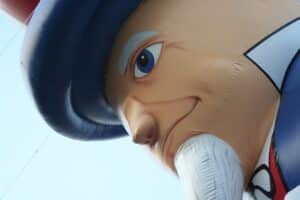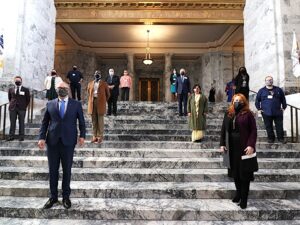Probably the most fundamental part of teaching the executive branch is the president’s expressed and implied powers and all the roles they fulfill.
But it’s a long list, and it can be tough to create a more creative lesson than just a lecture or textbook reading of them all.
I find success using real-life examples from recent presidents and having fun with incorporating the “wears many hats” idiom. This helps drive the point that it’s a demanding job, and we expect a lot from a single person.
Below, I share my lesson sequence for teaching the president’s expressed and implied powers and the formal and informal roles they all fall under. This should work great in your middle or high school Civics class too!
But first, let’s review these powers and why they’re important to cover well in your executive branch unit.
What are the Powers of the President?
Article II mentions the president’s expressed powers, which Constitutional experts generally divide into half a dozen roles.
The president’s powers include signing (or vetoing) laws, issuing pardons, negotiating treaties, commanding the military, appointing about 4,000 positions, overseeing the executive branch’s 4 million workers, and representing the nation overseas.
These are generally sorted into these formal roles:
- Head of Government
- Commander in Chief
- Chief Diplomat
- Chief Legislator
I also include the role of Check on the Judiciary, which is often overlooked by textbooks.
Over the centuries, additional informal roles and implied powers have been added to the list, arguably making the president even more powerful and also busier.
Informal roles include:
- Head of State
- Chief Guardian of the Economy
- Head of Party
- World Leader
Implied powers include issuing executive orders and agreements, influencing Congress, and dismissing executive officers. These aren’t listed in the Constitution but are inherent to the broad executive power that’s “vested” in the president, and the courts have allowed them.
Decide if you want to introduce each role and all the powers that accompany it together or work backward by reviewing all the powers and then having your students sort them into the roles they fall under.
Why are the Powers of the President Important to Teach?
Since the U.S. only has one leader (many nations have two), the president has quite a bit of power but also several “hats” to wear, which is a lot of responsibility on their shoulders.
But this was by design.
Despite not wanting to a “tyrannical” single leader, the Framers deliberately designed the president to have a lot of power. As you can imagine, this was one of the biggest points of contention for the Anti-Federalists.
However, not having a leader at all was a significant weakness of the Articles of Confederation.
If time allows, you may want students to explore these concerns (Cato No. 4 argues them pretty well) and Hamilton’s rebuttal (Federalist No. 69).
Understanding this context helps students be able to explore and debate the inquiry question, “Does the president have too much or the necessary amount of power?”
Lesson Ideas for Teaching the Powers and Roles of the President
Since each of these powers encompasses so much, you can do a lot more than just lecture on the topic. One idea is to bring in historical sources like those mentioned above. I like to use recent examples of presidential actions to illustrate each power and role.
I spend two to three class periods doing these activities. You can grab these in my store if you want them as a done-for-you lesson kit.
1. Review the Constitutional Wording
Unlike its bullet-pointed list of Congress’s powers, the Constitution is wordier about the president’s powers. I recommend chunking together all the clauses that fall under certain roles or having students code for them as they read through Article II.
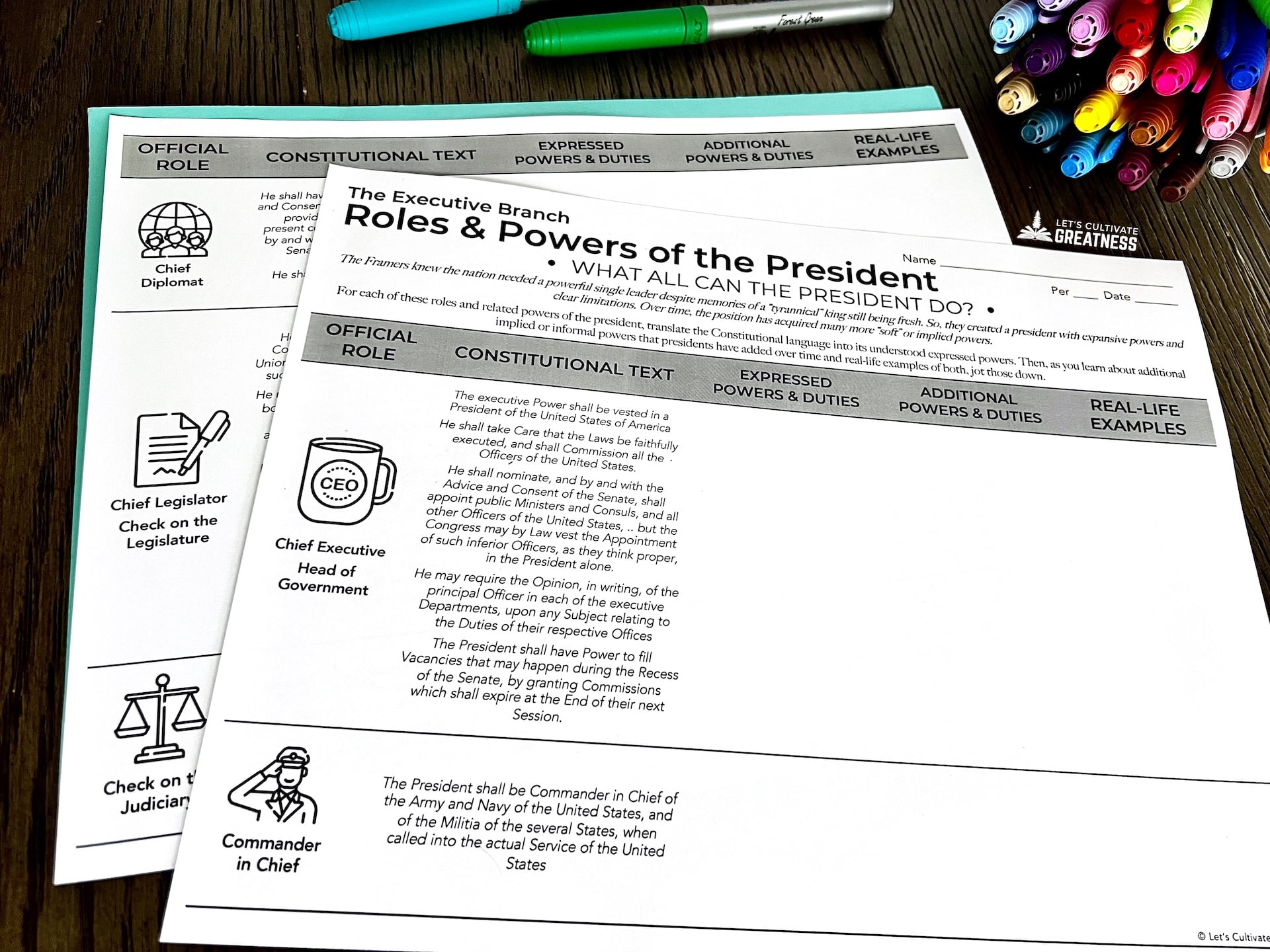
You can go through each power as a class or have students to work in small groups to annotate and code the text.
I like to do this as a class to avoid misunderstandings. Then, I can also share the implied powers not mentioned in the Constitution that also fall under each role.
2. Provide Simple Visual Examples
Along with the text of each power, I immediately share an example photo of a past president exercising it to illustrate the power better.
I use visuals any time I can. This isn’t just an ELL strategy—everyone benefits from seeing what’s being described.
High-resolution photos of anything related to the president’s official duties are easy to find on Wikimedia Commons since all White House photos are in the public domain.
3. Examine Historical Examples of Executive Actions
Having been introduced to these powers, students are ready to explore more in-depth examples.
I like to highlight one clear instance from each of the last several presidents. For example, President Trump’s pardon of Alice Marie Johnson to show Check on the Judiciary. Or, President Obama’s transformation of the Democratic Party to a more liberal platform to show Head of Party.
You can do this in various ways. Assign students an action a president has taken (like those above) to research and share as a one-pager or quick presentation. Or give links to information for students to read and share in a jigsaw strategy.
I provide pre-written summaries of various examples in a station formation to be more efficient with our time.
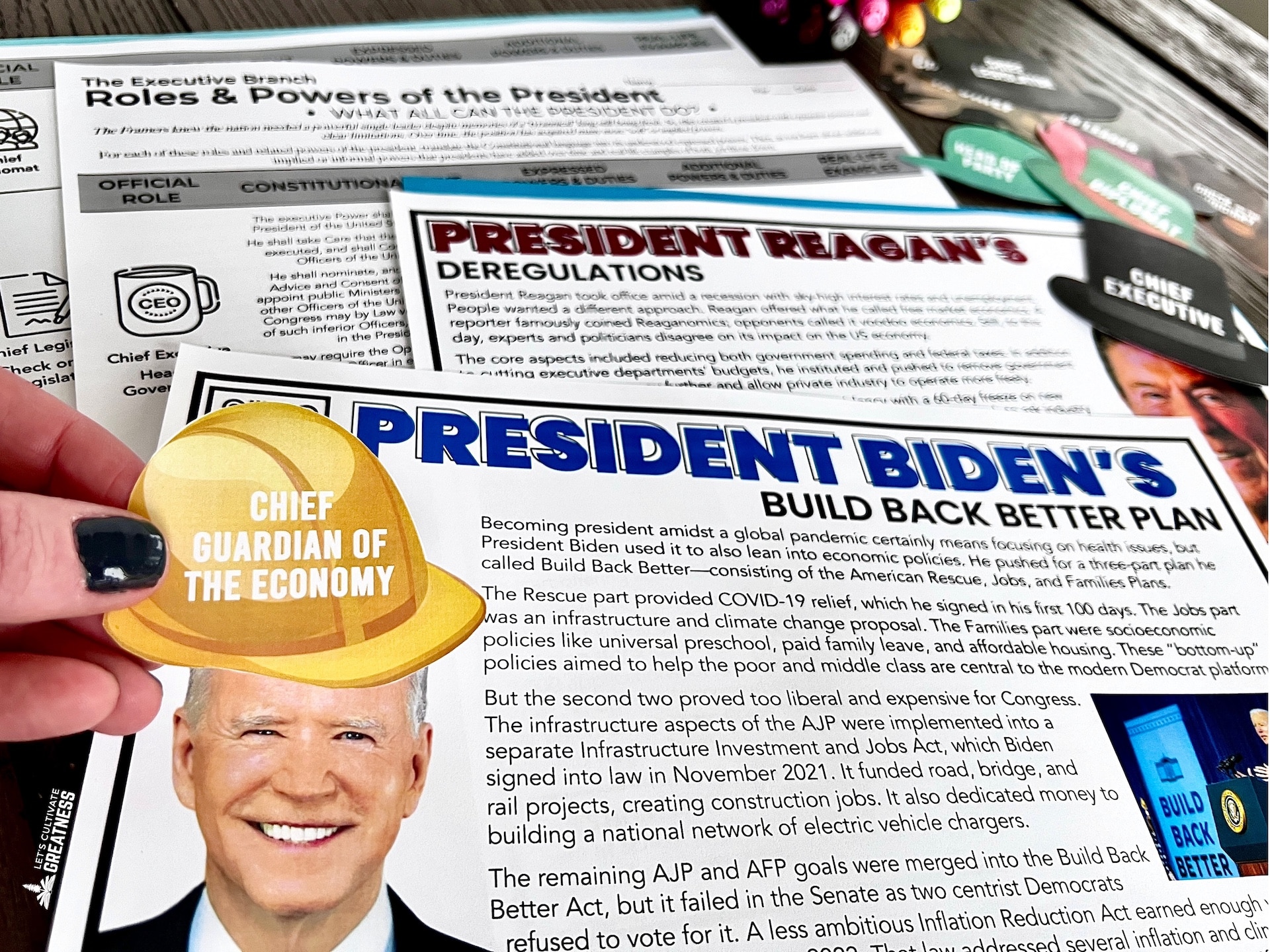
As students circulate throughout these stations, they answer higher-level questions to ensure comprehension. Then, they decide the roles involved, jotting them down on their growing notes—usually, a few are involved!
The trick is not to say explicitly the roles by name, but some will be pretty obvious!
4. Decide the Roles of the President
This last part usually happens the next day and works great as a recap and informal assessment, so you’ll want to leave those summaries or student-created posters up.
Since we’ve discussed these powers and roles as the many different “hats” a president wears, it’s fun to use literal hats. Or at least cut-out clipart hats.
Write the role names onto hats and hand them out to students to match with all the examples. You could also create cards with all the powers for students to match to the role hats as a class or in small groups.
I have students tape or glue the hats on the presidents’ heads. Bonus that these create an easy bulletin board or hallway display.
5. Asses with Current President’s Actions
For a quick next-day review or a more summative assessment, pull up new articles or short video clips of what the president has been up to this last week. Have students identify the powers and roles and explain how they carry them out.
And that’s it! In just a few classes, you’ve covered a core aspect of the executive branch—the president’s expressed and implied powers.
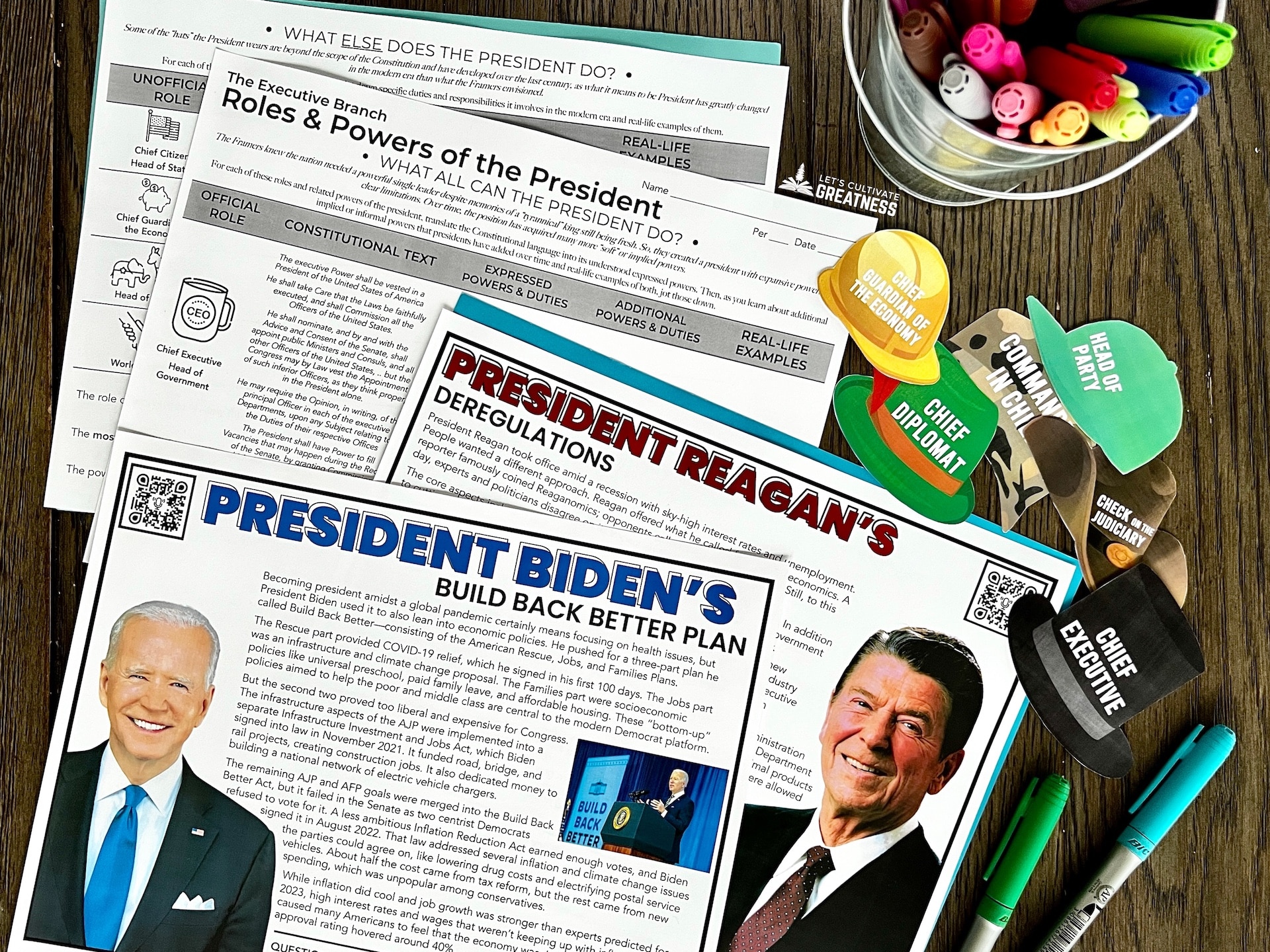
Grab my Powers and Roles of the President activity kit if you want a done-for-you lesson sequence to cover this key aspect of the Executive Branch in just a few class periods.
Feature image photo credit: Adam Shultz, official White House photo of President Biden signing an executive order


